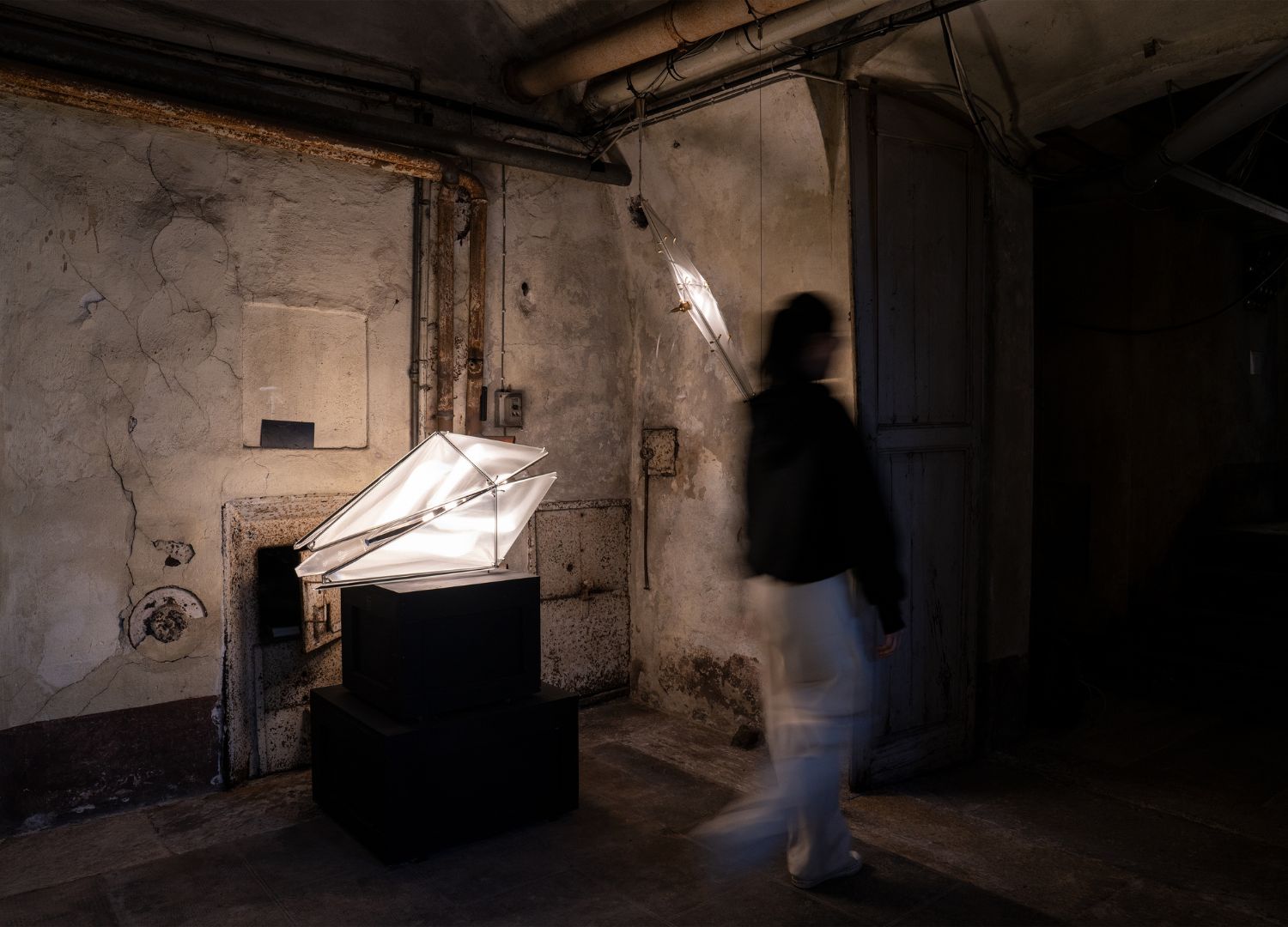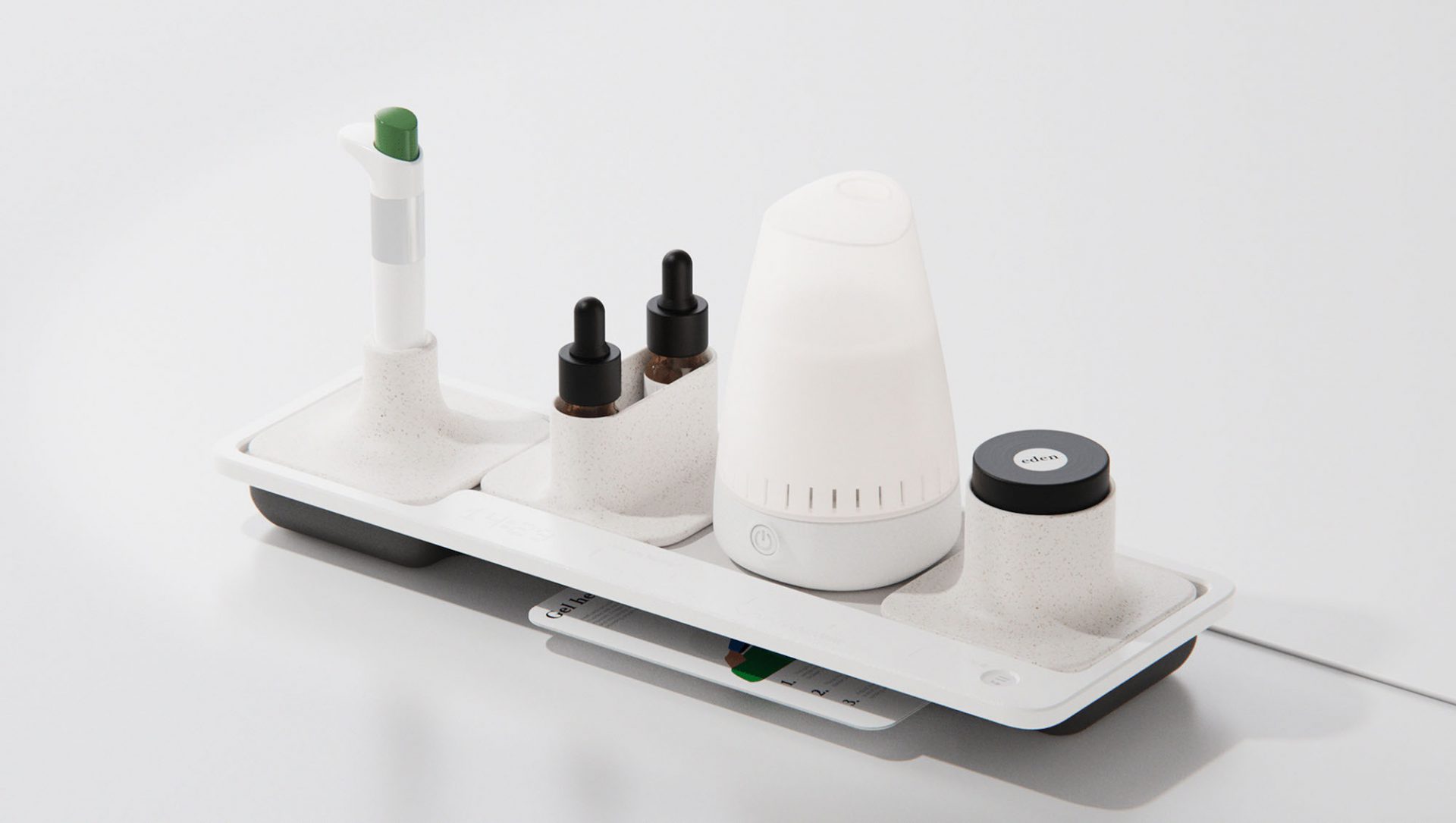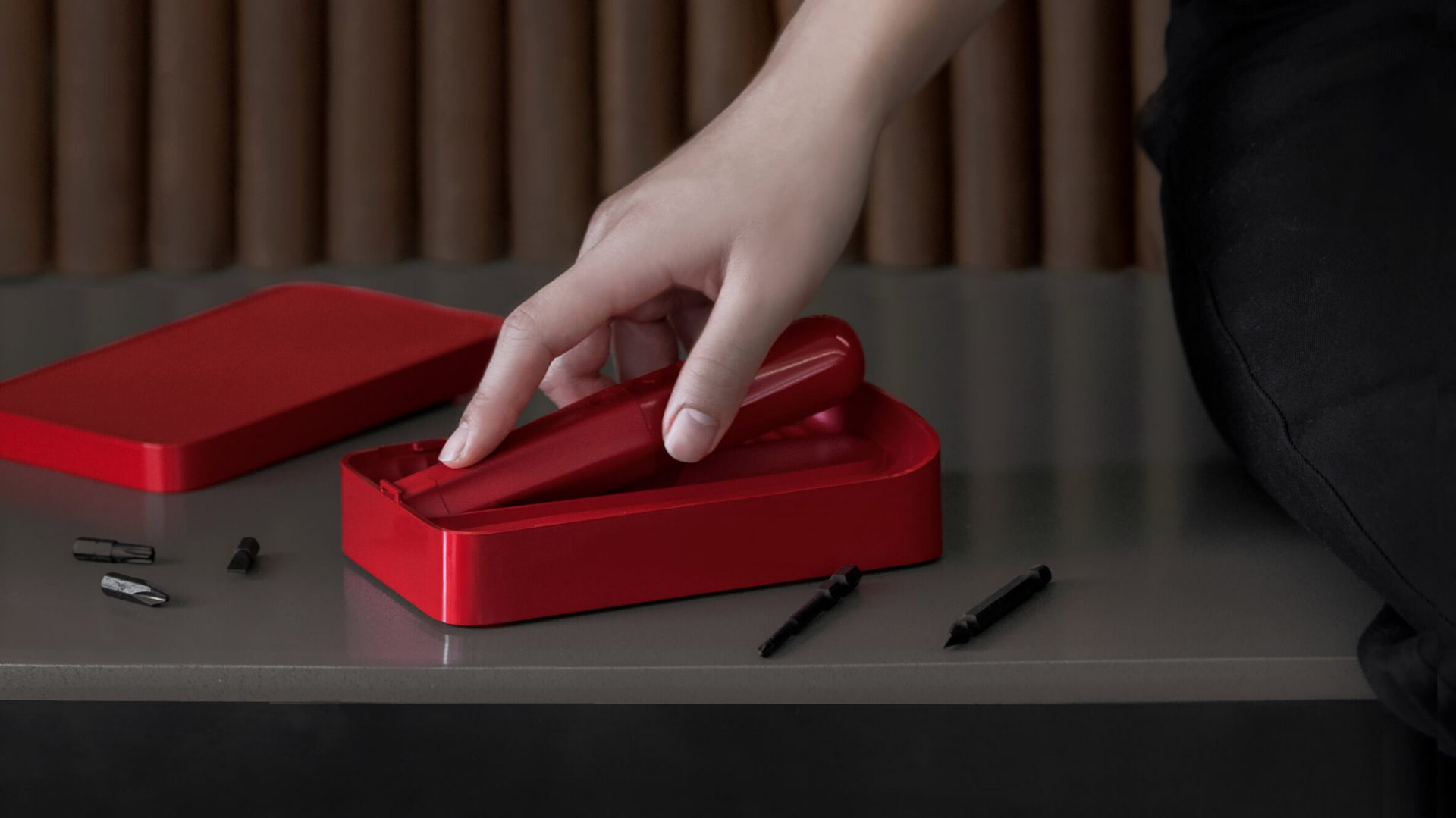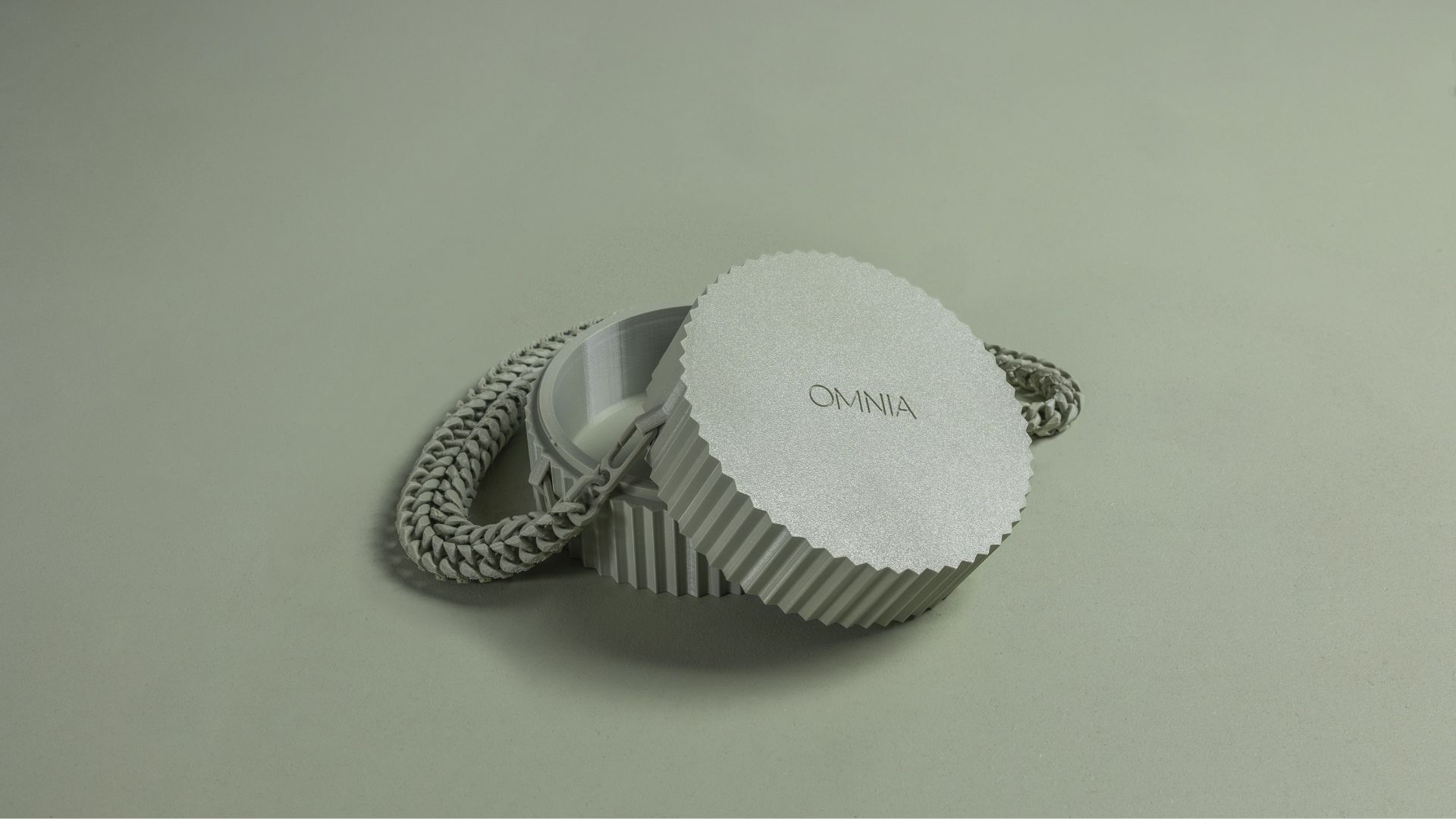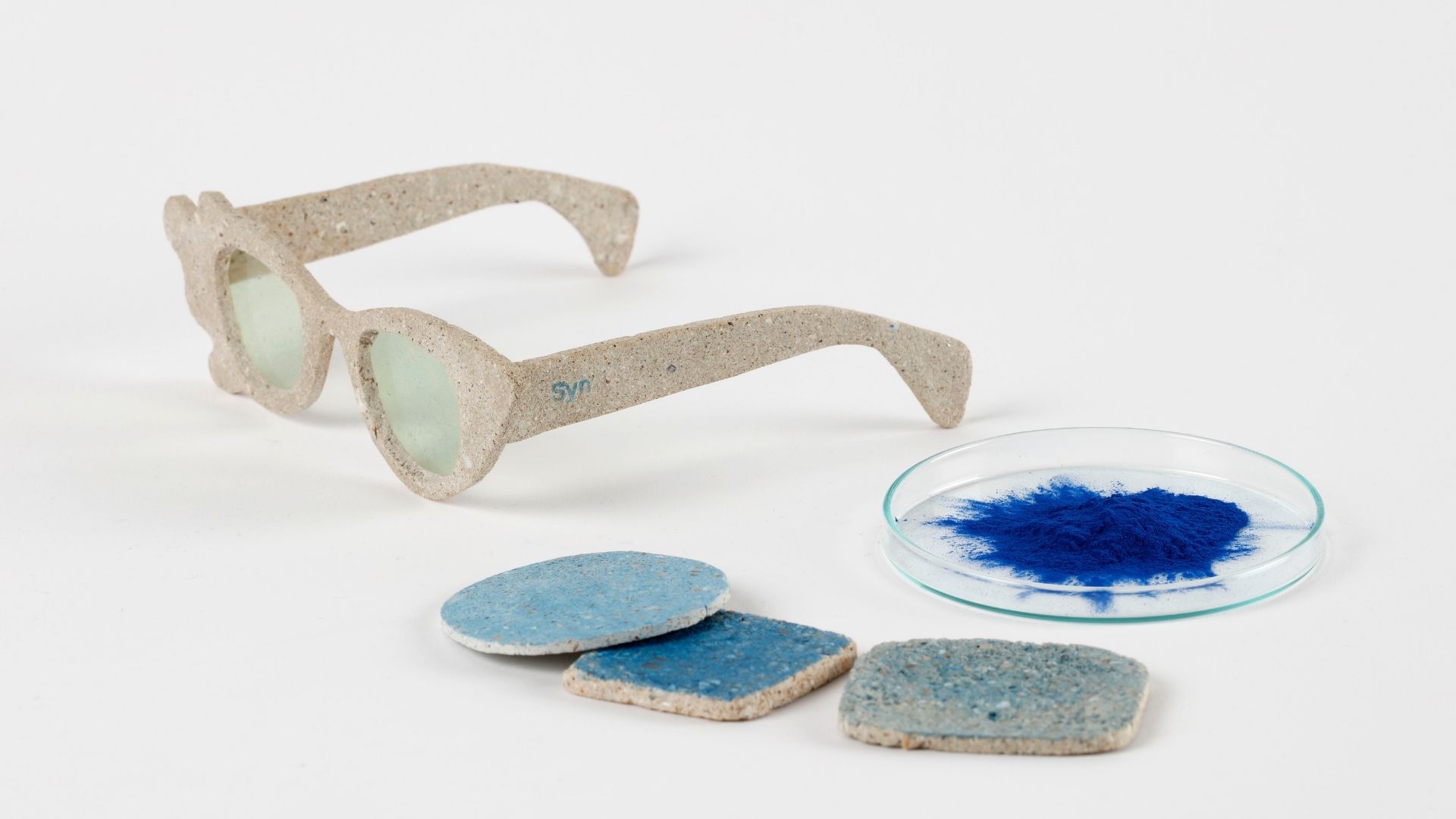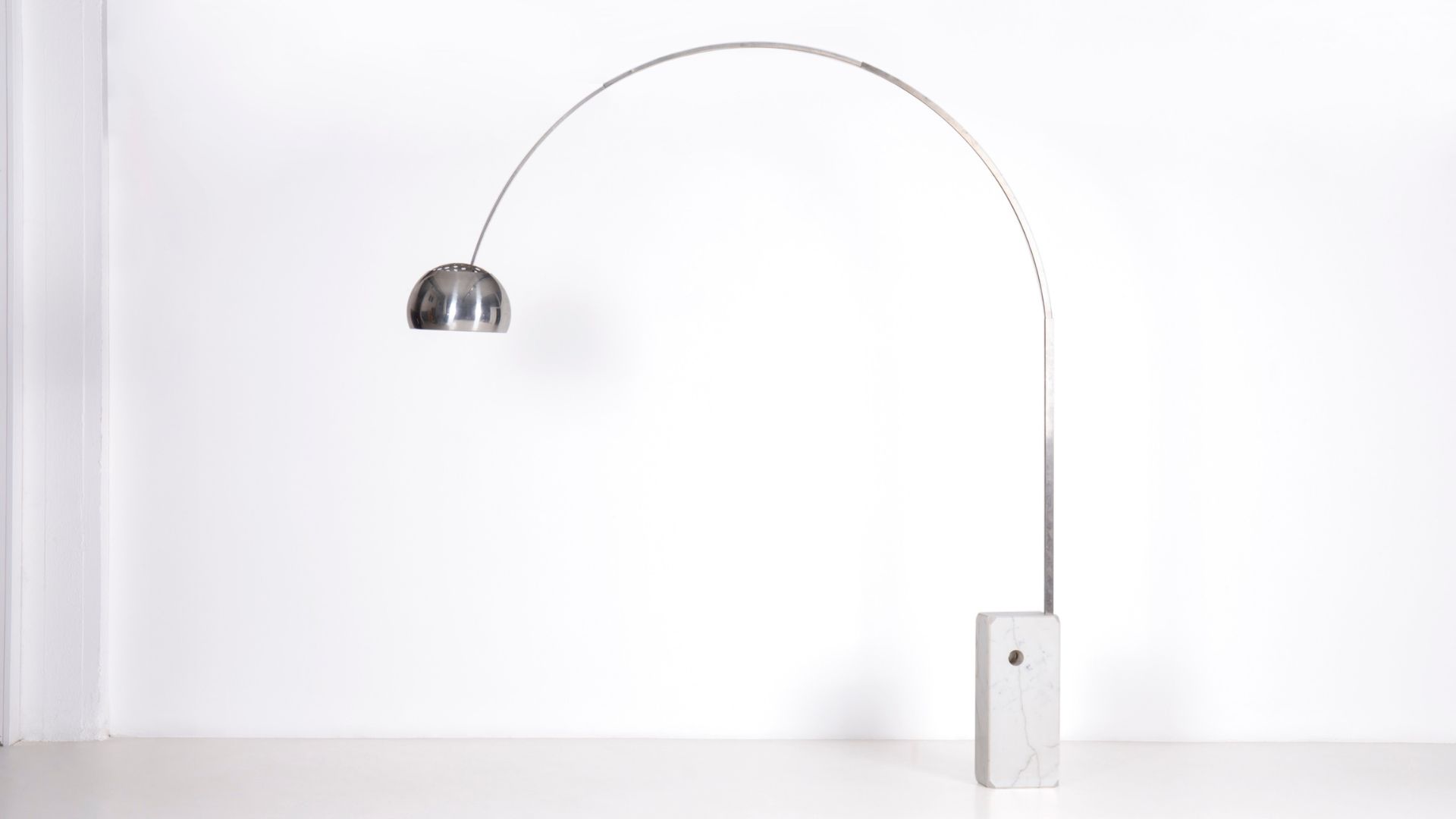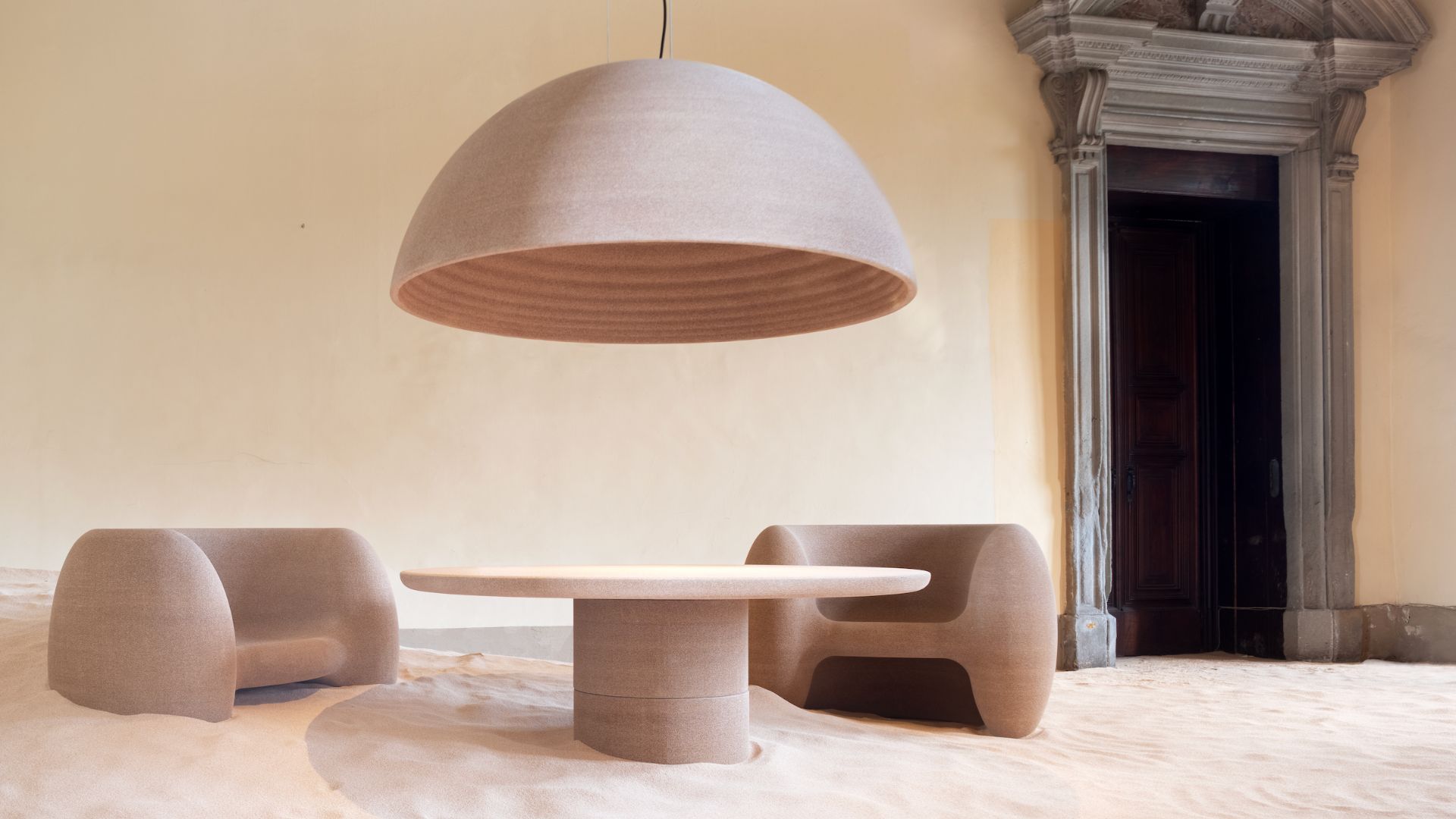Alcova 2024: ‘Barely There’ furniture and standing chandeliers take over historic villas
Independent design platform Alcova takes over two historic villas during Milan Design Week, presenting this year’s experimental furniture within their storied interiors.

From a former abattoir to a panettone factory and even a serene convent on the outskirts of Milan, Alcova has always been synonymous with redefining space through the lens of design. Now, as the design show enters its seventh edition, the spotlight shifts to Villa Borsani and Villa Bagatti Valsecchi, two villas near the Lombard capital where contemporary design intertwines with historical grandeur from April 15th to 21st.
Founded by curators Valentina Ciuffi and Joseph Grima, this itinerant project of Milan Design Week has continuously pushed boundaries, offering access to rarely seen locations and sparking dialogue with their unique architectural character. Following its recent international debut at the 1950s Selena Gold Dust Motel during Design Miami 2023, Alcova returns to Milan, promising a convergence of emerging and independent designers, galleries, companies, institutions, and schools.
With over 70 exhibitors showcasing their visionary works, this year’s edition promises to be a celebration of design in its purest form. DesignWanted invites you to explore a curated selection of highlights from Alcova below…
Alcova 2024 – Our choices:
Printed Nature by Harry Thaler and econitWood™️
Italian designer Harry Thaler approached Milan Design Week with a playful attitude, designing warm and organic shapes, daring with sometimes unexpected and unimaginable proportions. A dune-like, futuristic landscape is the backdrop for his latest furniture collection, a collaboration with 3D-printed material brand econitWood™️. Called Printed Nature, the collection showcases the brand’s recently developed 3D printing method, which employs wood waste from sawmills and timber harvesting and ensures the maximum optimisation of raw materials.

The result is a sound-absorbing material with incredible thermal insulation, and fire-resistant qualities, for a potential final product that can be considered CO2 neutral, which Thaler uses to create inviting and sinuous seats and lamps that appear to emerge from the ground like clusters of fungi. “The exhibition attempts to challenge and stretch further the boundaries of traditional architecture and design, an answer to our insatiable desire for innovation, aesthetics, and sustainable living,” explains Harry Thaler.
“Porta dei colori” by Linda Bergroth x Durat
“Porta dei Colori,” translating to “Gateway of Colours,” stands as Linda Bergroth’s latest collaboration with surface manufacturer Durat. Following her transformative work at the brand’s Helsinki showroom in 2022, Bergroth has once again been enlisted by Durat to harness its terrazzo-like surface material, crafted from recycled plastic waste, for an impactful installation nestled within the historic architecture of Villa Bagatti Valsecchi.
The abstract gateway, which takes over an arcade in the villa’s garden, boasts a vibrant palette inspired by the earthy tones of the surrounding colonnade. With a clear aim to showcase the expansive range and versatility of Durat’s colour and pattern offerings, the installation presents a curated selection of 25 colours and patterns from Durat’s extensive portfolio, which spans over 300 variations.
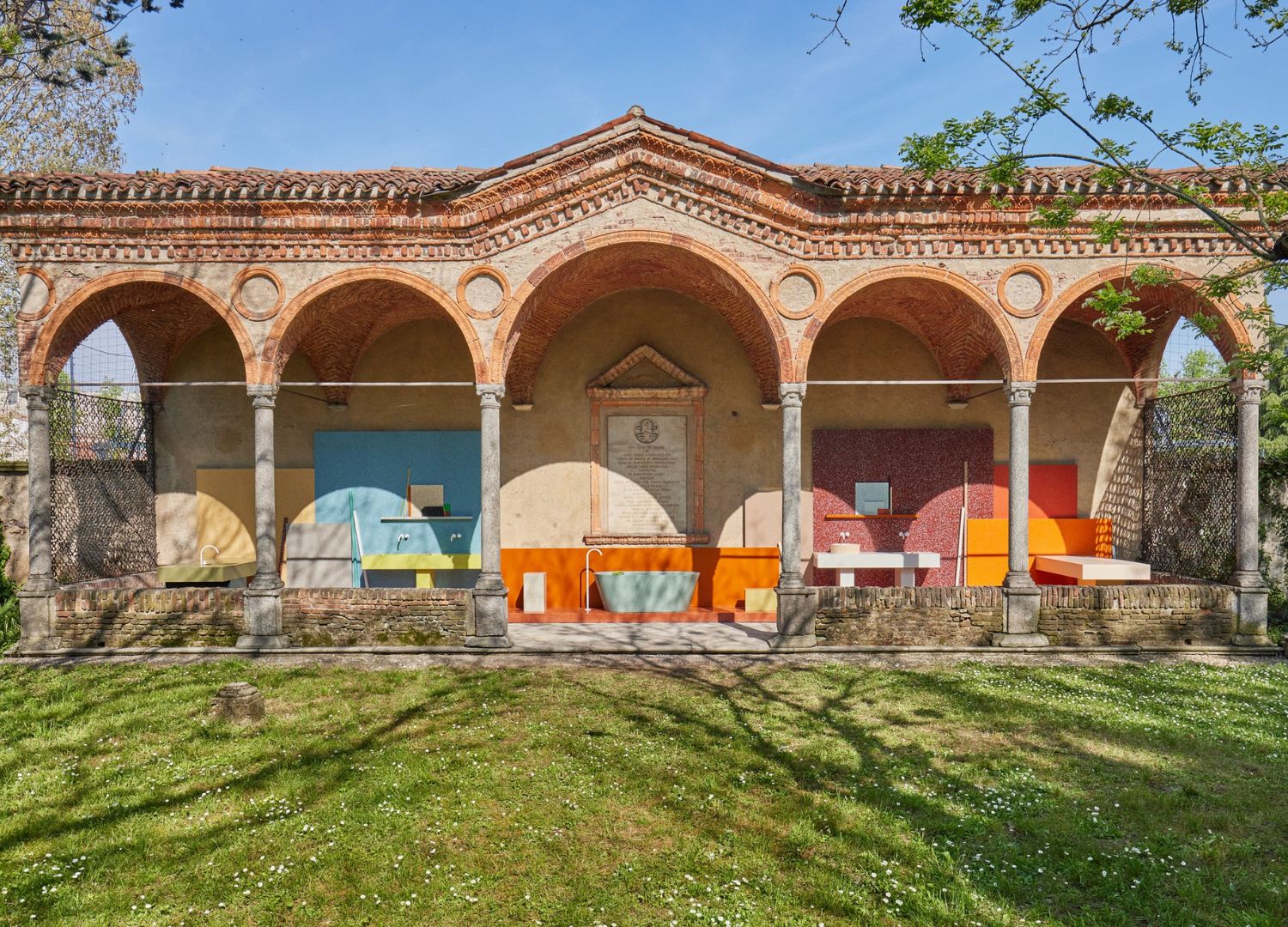
As a central feature of the installation, Durat also unveils Durat Plus, a solid surface material that it claims is the world’s first to blend PET resin derived from recycled materials with recycled solid surface. Durat Plus uses an impressive composition of up to 80% recycled content, embodying the brand’s commitment to sustainability.
Vale by A-N-D
How does a brand known for its pendant lights showcase its creations in a space where interventions are limited? With remarkable finesse, it seems. In the timeless grandeur of Villa Bagatti Valsecchi’s 17th-century interiors, Vancouver-based lighting company A-N-D boldly adapts its Vale light collection, originally conceived as chandeliers but seamlessly reimagined to be floor standing.
Inspired by the classical Greek Doric Column, visitors are invited to engage with these radiant structures, which are presented alongside a colourful platformed rug designed by Bethan Laura Wood for Italian brand cc-tapis, and a blue fibreglass couch by Turkish studio Uma Objects. Vale integrates effortlessly with the historic ambiance, boasting sinuous curves of glass enveloping a delicate light strip connected edge to edge. Additionally, A-N-D’s Column collection emerges as a majestic forest of thick, multi-sided glass blocks, stacked to create another immersive experience.
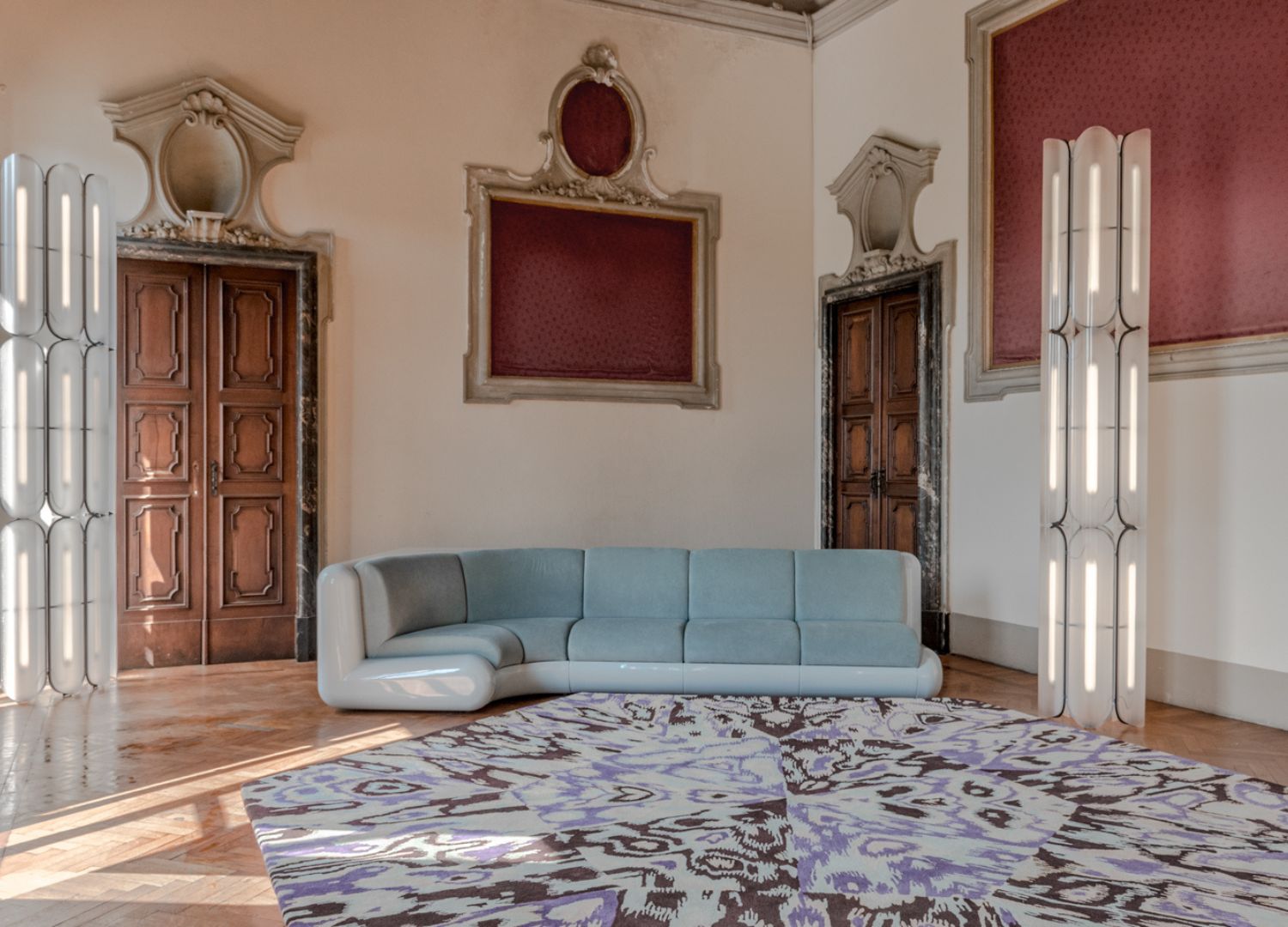
Torsi by Objects of Common Interest x Bitossi
Bitossi Ceramiche’s Torsi Collection breathes new life into Alcova’s historical setting with bursts of vibrant colour and classical inspiration. Designed by New York- and Thessaloniki-based design studio, Objects of Common Interest, Torsi draws upon ancient Greek and Italian ceramic traditions, reimagining the classical column as stackable vases. These cylindrical and semi-cylindrical vessels offer versatility in arrangement, whether vertically or horizontally, alone or in creative compositions, as they are on the occasion of Milan Design Week.
Available in six bold shades, these ceramic pieces redefine the conventional notion of garden planters, transforming them into sculptural elements that interact dynamically with their surroundings. Placed under the arches of Villa Bagatti Valsecchi, they bring a contemporary pop of colour, ironically rooted in Bitossi’s rich ceramic tradition that dates back to the founding of its factory in 1921.

Junya Ishigami’s Furniture Series
Visitors must scale the steps of a historic icehouse to discover Maniera’s showcase of furniture by Japanese architect Junya Ishigami. In striking contrast to their surroundings—a precursor of the modern refrigerator 7 metres deep underground—the Belgian gallery presents Ishigami’s latest creations, accentuating the designer’s subtle and refined aesthetic.
The new furniture collection consists of several chairs and tables that reimagine the inherent stiffness of materials like steel, leather and wood. They include the Zaisu low chair and a glass table, both originally conceptualised for Ishigami’s cave-like House & Restaurant in the city of Ube. Elsewhere, the atelier table, a dining table, two partitions and several lamps are on display, each one with an ethereal quality that interacts beautifully with the light and shadow defining its surroundings.
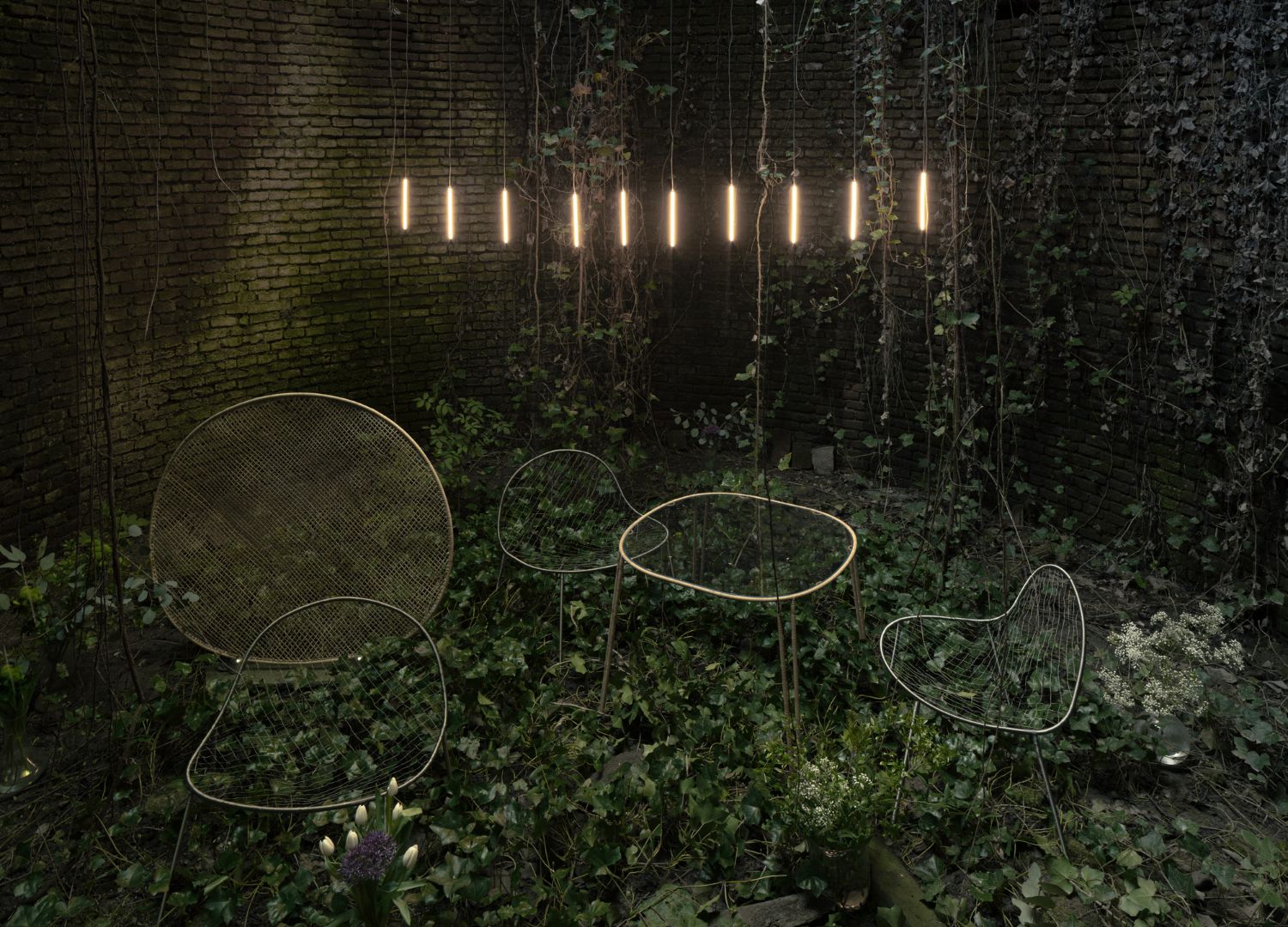
Crumbles by Terraformae
The historical Sant’Anselmo brickworks unveils its new research lab Terraformae alongside its latest approach to terracotta. Pushing the boundaries of traditional production, it has unveiled a series of terracotta tiles with a unique terrazzo effect, achieved through the inventive use of scraps from other materials.
Led by the brand’s art director Sveva Bizzotto, this process involves using scraps from the processing of other materials, such as glass and cryolite, resulting in tiles with a playful and delicate appearance, while still honouring the essence of the original material. At Alcova, these tiles come together to form small built elements, showcasing their potential to transform interiors into bespoke works of art.
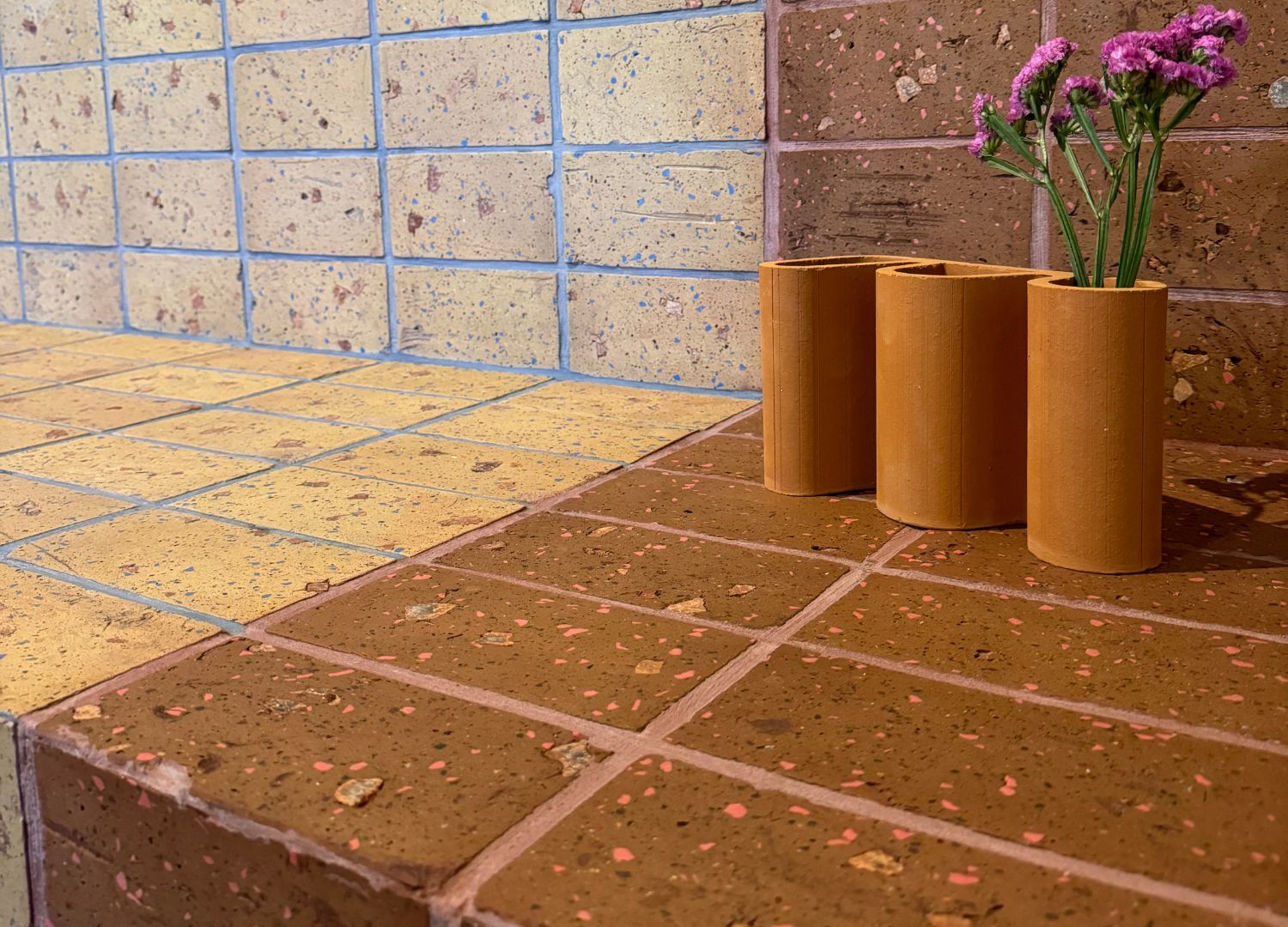
FraFra Tapestry and PET Lamp Gurunsi by Álvaro Catalán de Ocón
Madrid-based designer Alvaro Catalán de Ocón brings the architecture of northern Ghana to Milan. Working closely, and respectfully, with artisans belonging to the Frafra tribe, a subset of the Gurunsi people of northern Ghana, he has commissioned several large-format pieces that preserve traditional weaving techniques from the area whilst depicting traditional buildings in the area and the families that inhabit them. These traditional buildings represent the local residential architectural model of Gurunsi built from adobe and wood. They house a family unit in circular structures, organically expanding as the family grows.
The brand’s other flagship project is the PET lamp, a product of an initiative that began in 2012 to address the global plastic waste problem. The initiative has since seen Álvaro Catalán de Ocón collaborate with artisan communities in Chile, Ethiopia, Thailand, Ghana, Australia, and Japan, to transform discarded PET plastic bottles into unique lampshades that foster a cultural dialogue with the community in which it was made. On the occasion of Milan Design Week, Catalán de Ocón is exhibiting the PET Lamp Gurunsi, produced locally and defined as a generic model of the Frafra family compounds with local artisans.

“While the tapestries reproduce the exact blueprint of existing buildings, the PET Lamp Gurunsi takes inspiration from the same architecture plans to create generic abstractions with multiple light points, designed to be suspended from a ceiling,” the designer explains. “Circles are organised around functional cores marked by reused PET bottles. The weave is foldable, facilitating shipping. Installation is straightforward, and replacements can be locally sourced.”
Pulpopolis by Kickie Chudikova
Is it a spaceship? Is it a satellite? No, it’s a jellyfish, but its futuristic allure is undeniable. Crafted by New York-based designer Kickie Chudikova, “Pulpopolis” serves as a love letter to the underwater realm—a captivating installation that celebrates the innate splendour of marine life. The name “Pulpopolis” intertwines two concepts: “Pulpo,” representing octopi and other underwater creatures like jellyfish and corals that inspired the shapes of these glass creations, and “Polis,” denoting “city” in Greek, symbolising human-made objects, culture, and civilization itself.
The collection comprises three intricately designed crystal glass lamps resembling ethereal medusas adrift in the sea. Each one showcases a unique shape and size, emanating a radiant, colourful glow. Murano glass’s signature vibrant hues adorn these pieces, with each Pulpo exhibited in five distinct colours, each one with a unifying red ring encircling the centre to signift passion, love, and connection. Handcrafted by master glassblowers at the esteemed Berengo Studio in Murano, the collection is surrounded by a similarly intricate wallpaper depicting a flourishing seascape produced in collaboration with Dandy Design.
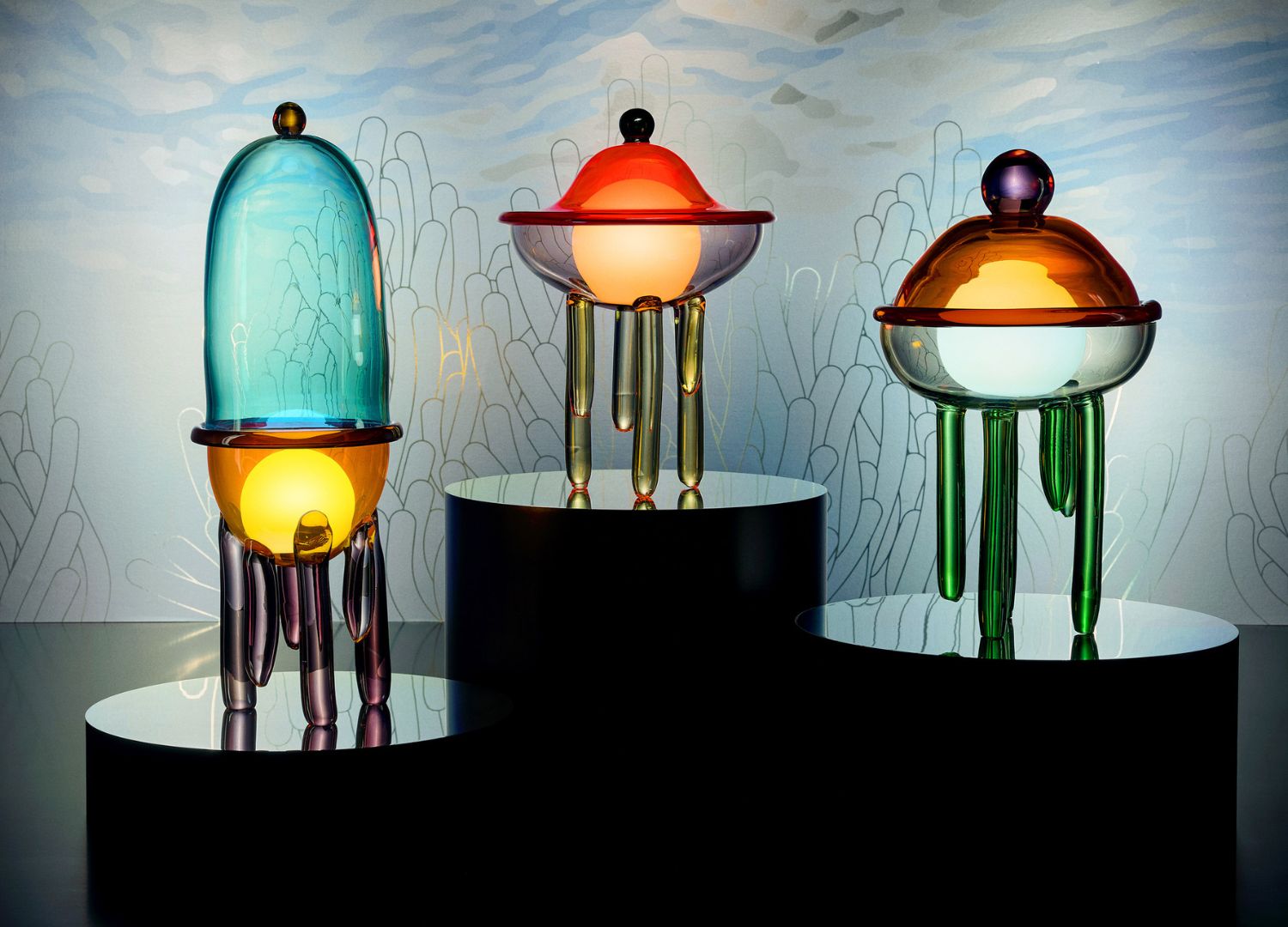
Bel Air by Ryuichi Kozeki
Tokyo-based designer Ryuichi Kozeki unveils “Bel Air,” an updated version of his Diag Lamp, first showcased at last year’s Milan Design Week. Described by Kozeki as a celebration of the very “air” that surrounds us, this latest iteration features a unique design, nestled between lower and upper shells, which serve as lampshades to delicately diffuse light. Additionally, the bottom shell doubles as a functional tray, adding versatility to its elegant form.
“Bel Air” invites visitors to reconsider the relationship between light and space, blurring the lines between function and artistry. On display are 3D-printed prototypes that analyse and reconstruct the shape of a full-sized shell when it is broken, as well as several variations that attempt to divide the shell and create the resulting shapes. Copper and aluminium serve as the primary materials, lending a touch of modern sophistication to the collection.
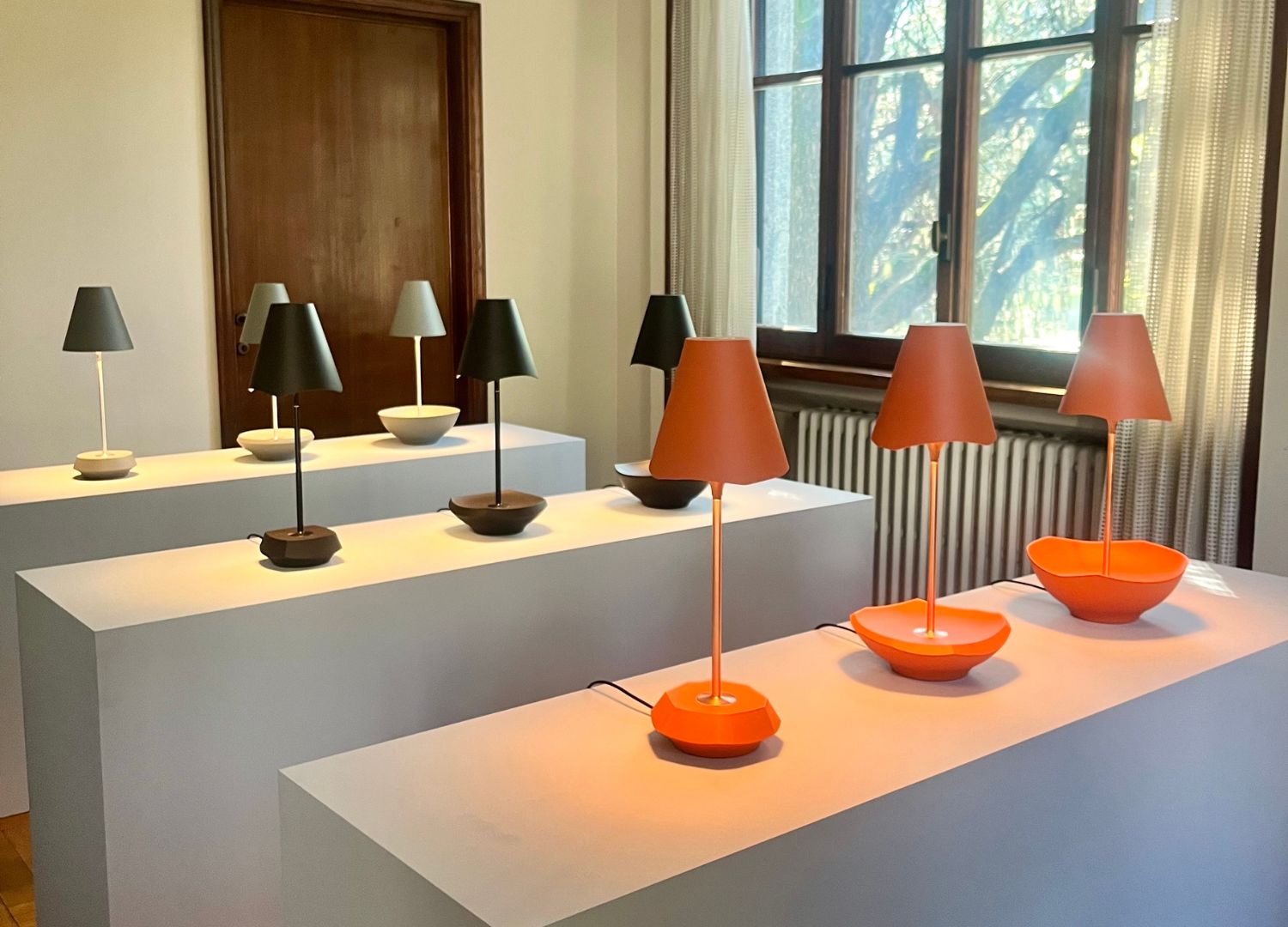
Fragment by Singchan
Finally, illuminating the abandoned outhouses of Villa Bagatti Valsecchi is “Aloof Light”, a haunting vision of a dilapidated future by Singchan Design. Amidst the abandoned outhouses of Villa Bagatti Valsecchi, SINGCHAN DESIGN unveils traces of human craftsmanship emerge as the Guangzhou-based design studio delves into an intricate interplay between lighting, furniture, and objects in their environments.
At Alcova, they showcase various lamps from their “Fragment” series, drawing inspiration from a cutting-edge vision of the future and the architectural precision of their designs. Constructed from stainless steel, the lamps boast sharp, angular forms achieved through precise folding, juxtaposed with the soft texture of glass. The glass panels, intricately cut and fixed onto the stainless steel frames, deliberately expose lamp holders, screws, and wires, creating a delicate yet striking contrast of textures and materials.
